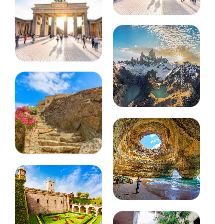Visiting the Pyrenees: 20 must-dos
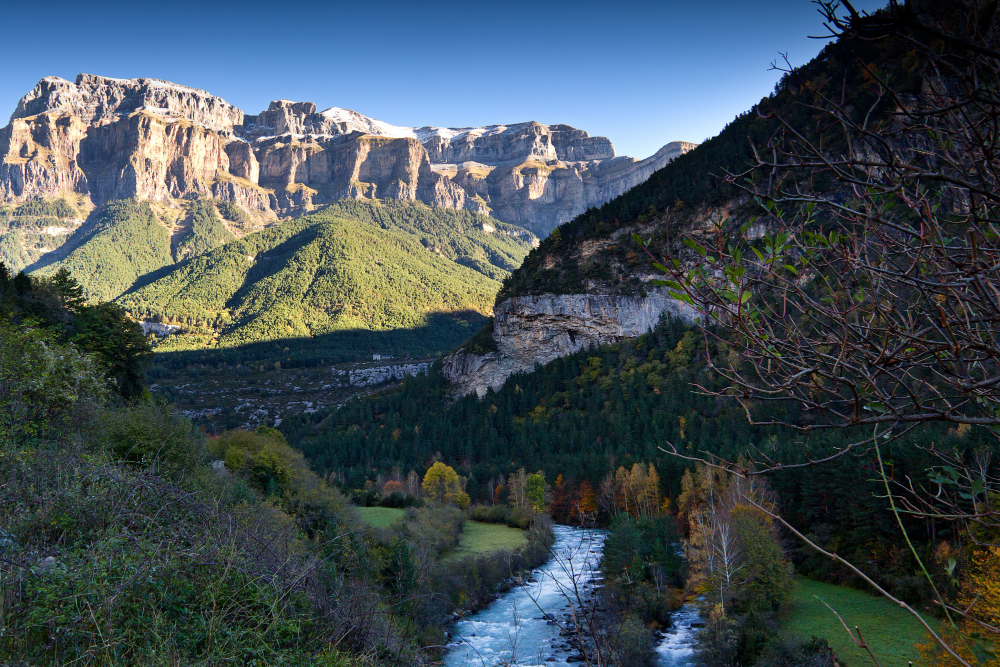
A majestic mountain range stretching between France and Spain, the Pyrenees offer a concentration of natural and cultural wonders that leave no one indifferent. From imposing peaks to crystal-clear lakes, authentic villages and renowned spas, this region is full of treasures that are well worth a visit. Whether you’re a keen hiker, a history buff or just curious about the breathtaking scenery, a visit to the Pyrenees is an unforgettable experience. From Lourdes to the Pic du Midi, via glacial cirques and verdant valleys, discover the 20 must-sees that make this region one of the most beautiful in France.
200 audioguided tours for cities all around the world
DownloadAlso read about the Pau guide:
- The 16 most beautiful lakes in the Pyrenees
- The most beautiful villages in the Pyrénées-Orientales
- 5 swimming spots in the Pyrénées-Orientales
1. The Cirque de Gavarnie
Listed as a UNESCO World Heritage Site, the Cirque de Gavarnie is one of the absolute jewels of the Pyrenees. This geological wonder, formed by glacial erosion, impresses with its colossal dimensions: 800 metres high and 3 kilometres in diameter. At the heart of this grandiose setting is the Grande Cascade de Gavarnie, one of the highest waterfalls in Europe at 422 metres. The cliffs that encircle the cirque offer a breathtaking spectacle, particularly at sunset when the golden light embraces the limestone walls. An accessible hike leads to the foot of the waterfall, offering total immersion in this exceptional landscape that has inspired many artists and writers.
2. The Pic du Midi de Bigorre
Reaching an altitude of 2,877 metres, the Pic du Midi de Bigorre offers one of the most spectacular panoramas in the Pyrenees. Accessible by cable car from La Mongie, this legendary summit is home to an internationally renowned astronomical observatory and a 360-degree panoramic terrace. On a clear day, the view takes in the entire Pyrenean chain, from the Pyrénées-Atlantiques to the Pyrénées-Orientales, as well as the Adour plain and the Landes to the north. At night, the Pic du Midi transforms itself into one of the best stargazing spots in France, with the “International Dark Sky Reserve” label. The unique experience of spending a night at the summit allows you to admire the celestial vault in exceptional conditions.
3. Lourdes and its sanctuary
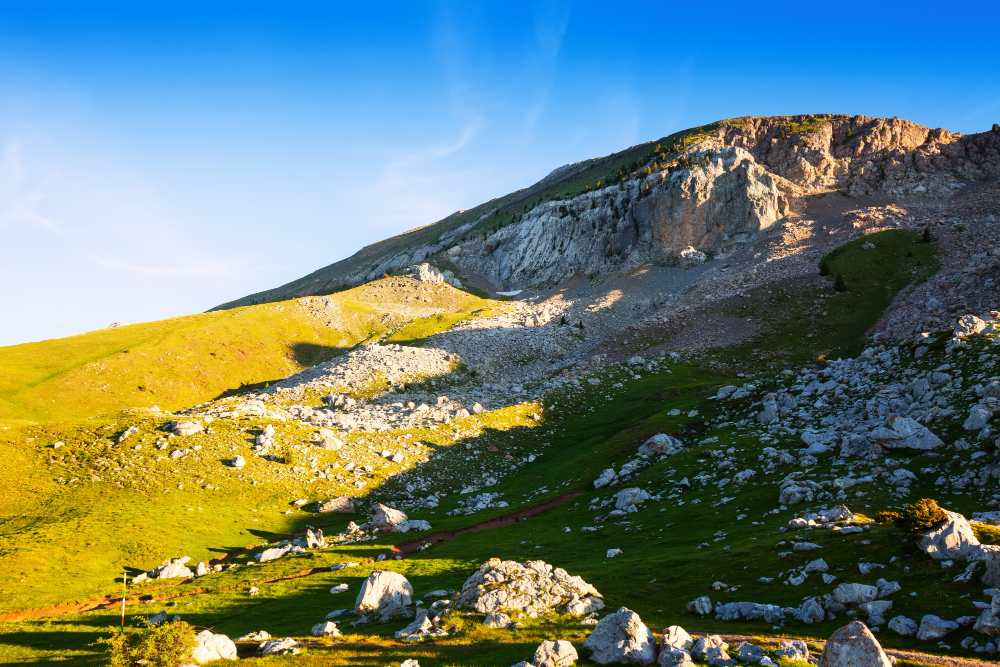
A world-famous pilgrimage destination, Lourdes attracts millions of visitors from all over the world every year. The Sanctuary of Notre-Dame de Lourdes, built around the Grotto of Massabielle where Bernadette Soubirous had her apparitions in 1858, is the spiritual heart of the town. As well as its universal religious dimension, Lourdes has a remarkable architectural heritage, notably the Basilica of the Rosary and the Basilica of the Immaculate Conception. The medieval fortified castle, perched on its rocky outcrop, houses a Pyrenean museum that recounts the history and traditions of the region. The gardens and green spaces surrounding the sanctuaries offer moments of contemplation and serenity in an unspoilt natural setting.
4. Pau, the royal city
Download the audio tour to discover Pau on foot and on your own
The historic capital of Béarn and birthplace of Henri IV, Pau is well worth a visit during your stay in the Pyrenees. The majestic Château de Pau, birthplace of the future King of France, stands proudly above the town and offers a fascinating journey through French history. The famous Boulevard des Pyrénées, a 1.8-kilometre natural balcony, offers an exceptional panorama of the mountain range, from the Pic d’Anie to the Pic du Midi. To discover all the secrets of this elegant city, take theNavaway itinerary, which takes you through its most beautiful districts in 18 audio-guided stages, from Place Royale to the gardens of the château.
5. The Pont d’Espagne and Lac de Gaube
Classified as a Grand Site de France, the Pont d’Espagne is one of the most spectacular gateways to the Pyrenees National Park. Located in the Cauterets valley, this enchanting site takes its name from an ancient stone bridge that spanned the Gave de Marcadau. The tumultuous waterfalls tumbling down the slopes create a permanent spectacle, particularly impressive in spring when the snow melts. A cable car provides easy access to Lac de Gaube, perched at an altitude of 1,725 metres. This lake, of glacial origin, is a striking deep blue and a majestic reflection of the Vignemale, the highest peak in the French Pyrenees. The hike around the lake offers a variety of viewpoints and the chance to observe remarkable Alpine flora and fauna.
6. Néouvielle Nature Reserve
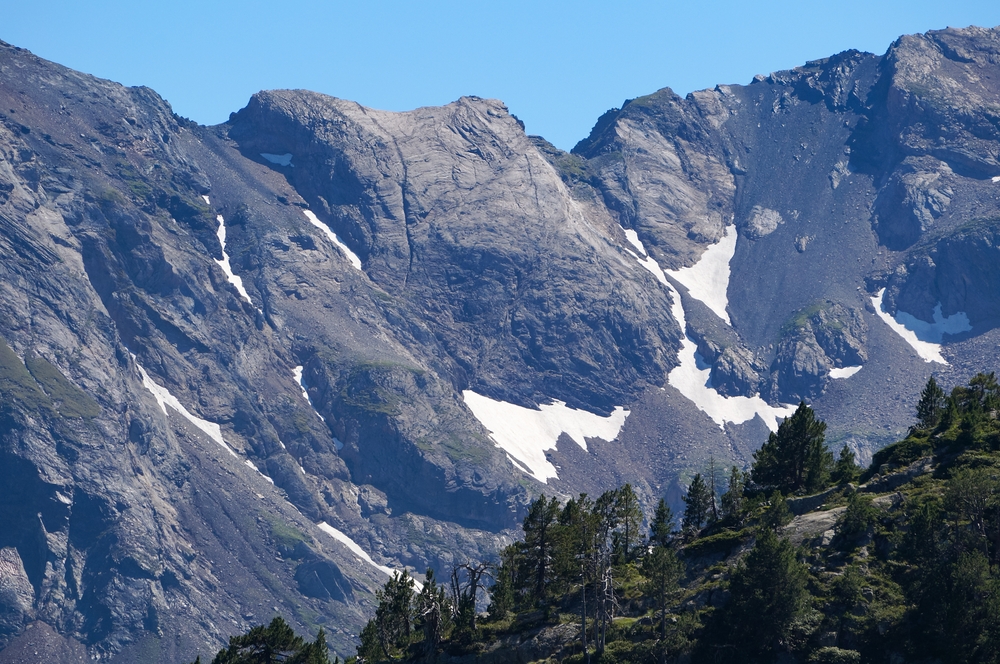
A veritable jewel of biodiversity, the Néouvielle Nature Reserve has been protecting an exceptional high mountain area since 1935. With its 70 high-altitude lakes nestling in a setting of pink granite, this reserve offers breathtakingly beautiful scenery. Lac d’Orédon, easily accessible by car from the dam, is an excellent starting point for exploring the reserve. The Aubert and Aumar lakes, accessible by hiking trails, reveal even wilder panoramas. The forest of hooked pines, unique in the Pyrenees, is home to centuries-old specimens that testify to the ecological richness of the site. One of the great pleasures of exploring this exceptional reserve is observing the mountain fauna, in particular marmots, isards and large birds of prey.
7. The Col du Tourmalet
The Tourmalet, the mythical 2,115 metre-high Pyrenean pass, has a legendary place in the history of the Tour de France cycle race. Since it was first climbed in 1910, this giant of the Pyrenees has been crossed more than 80 times by the Grande Boucle, making it the Tour’s most popular pass. At the summit, the stele dedicated to Jacques Goddet and Henri Desgrange pays tribute to the founding fathers of the race. The panorama from the pass takes in a large part of the Pyrenees, with views as far as the Pic d’Aneto in Spain on a clear day. In summer, La Mongie offers a wide range of mountain activities, while in winter it becomes one of the largest ski areas in the French Pyrenees, along with Barèges-La Mongie.
8. Lake Oô
Nestling in an imposing cirque in the Larboust valley, Lac d’Oô is one of the most beautiful lakes in the Pyrenees. This artificial lake, created in 1925 for hydroelectric purposes, blends perfectly into the mountain landscape and offers an idyllic setting for hiking. Access to the lake requires an approach walk of around 1? hours from the Granges d’Astau car park, along a well-marked path that runs alongside the Gave d’Oô. Along the way, successive waterfalls, notably the spectacular 275-metre-high Espingo waterfall, provide refreshing stops. Once at the lake, the spectacle is breathtaking: the turquoise waters reflect the sheer walls of the cirque, creating a natural tableau of exceptional beauty. For more experienced hikers, the climb to the Espingo lakes further up offers even more spectacular views.
9. Saint-Jean-Pied-de-Port
Saint-Jean-Pied-de-Port, the last French stopover on the Pilgrim’s Way to Santiago de Compostela, has a captivating authenticity and well-preserved heritage. This medieval bastide, nestling at the foot of the Pyrenean passes, has preserved its ramparts, cobbled streets and typically Basque houses with colourful facades. Rue de la Citadelle, the main thoroughfare in the old town, is home to many traditional shops and restaurants serving local specialities. The citadel, built in the 17th century, offers exceptional views over the Nive valley and the foothills of the Pyrenees. The church of Notre-Dame-du-Bout-du-Pont, a spiritual departure point for pilgrims, bears witness to the town’s historical importance on the Jacobean routes. The surrounding area offers a wealth of hiking opportunities, including the Ibaneta and Roncesvalles passes in Spain.
10. Mount Canigou
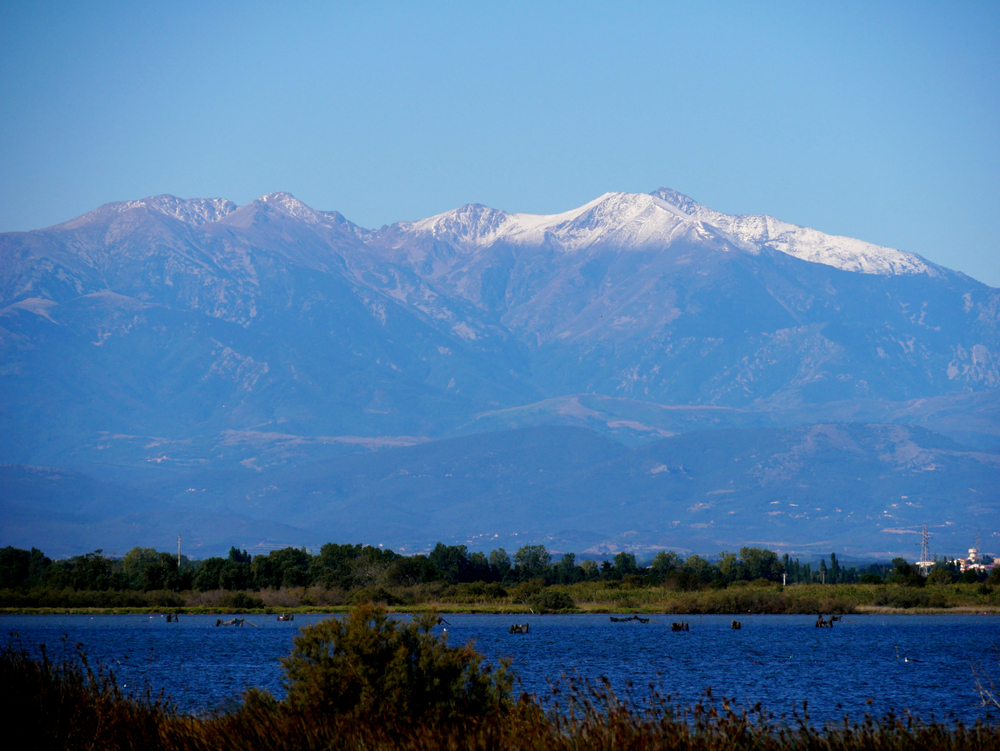
The sacred mountain of the Catalans, Mont Canigou rises majestically to an altitude of 2,784 metres, dominating the Roussillon plain and the Mediterranean. This emblematic summit of the Pyrénées-Orientales offers one of the finest panoramic views in the region: on a clear day, you can see as far as the Spanish coast, the Corbières and even the Alps. Climbing Canigou is a sporting challenge for experienced hikers, with several routes available from Vernet-les-Bains or Castell. The Cortalets refuge, at 2,150 metres, is the perfect place to spend the night in the mountains and make the final ascent at sunrise. The descent can be made via the abbey of Saint-Martin-du-Canigou, a jewel of Romanesque art perched on a rocky spur at an altitude of 1,055 metres, offering an exceptional cultural dimension to this exceptional hike.
11. Cauterets and its thermal baths
A renowned spa town since ancient times, Cauterets has an exceptional mountain setting and a unique spa heritage. Nestling in a deep valley in the Pyrenees National Park, this elegant Belle Époque resort has played host to many celebrities, from George Sand to Marguerite de Navarre. The Cauterets thermal baths, fed by naturally hot springs rich in sulphur, offer both traditional cures and modern wellness facilities. The 19th-century spa architecture, with its ornate facades and covered galleries, bears witness to the golden age of the spa resort. Cauterets is also an excellent base camp for exploring the wonders of the national park: Lac de Gaube, Pont d’Espagne, Marcadau valley. In winter, the ski resort of Cauterets offers a family-friendly area with a wide variety of slopes and plenty of snow.
12. The Caves of Betharram
An underground wonder of the Pyrenees, the Grottes de Bétharram offer an extraordinary journey into the bowels of the mountain. Discovered in 1819, the caves extend over five levels linked by natural galleries several kilometres long. The 1? hour tour includes a walk, a ride on the underground train and a boat trip on the underground river, creating a unique and unforgettable experience. The successive chambers reveal exceptional geological formations: stalactites, stalagmites, limestone draperies and natural pools sculpted by water over thousands of years. The Chaos Room impresses with its cathedral-like dimensions, while the underground lake offers a moment of magical contemplation. Located between Lourdes and Pau, the caves are an ideal refreshing stop-off on hot summer days.
13. Montsegur Castle
Perched on its rocky peak at an altitude of 1,207 metres, the Château de Montségur evokes one of the most tragic pages in French history. The last Cathar citadel, this “castle of vertigo” withstood the siege of the Crusaders for almost ten months before falling in March 1244. The climb up to the ruins of the castle, although tough (30 minutes of sustained ascent), rewards the effort with an exceptional panorama of the Ariège Pyrenees and the Tarascon plain. The remains of the fortress, meticulously restored, offer a glimpse into the life of the last Cathar Perfects. The village of Montségur, at the foot of the castle, is home to an archaeological museum that traces the history of Catharism and displays objects discovered during excavations. This visit is full of emotion and history, and a must if you want to understand the very soul of the Ariège Pyrenees.
14. The Yellow Train of the Pyrenees
A veritable jewel of France’s railway heritage, the Train jaune runs between Villefranche-de-Conflent and Latour-de-Carol on 63 kilometres of metric track. Nicknamed the “Canary” because of its yellow and red livery, this tourist train climbs the slopes of the Pyrénées-Orientales, crossing some remarkable engineering structures: vertiginous viaducts, spiral tunnels and the famous Séjourné bridge suspended 65 metres above the valley. The route, which takes around 3 hours, passes through breathtaking scenery, from the wild gorges of the Têt to the high plateaux of the Cerdagne. The open-air coaches, open during the summer months, allow you to take full advantage of the panoramic views and pure mountain air. The typical stations, particularly Font-Romeu-Odeillo-Via, the highest SNCF station in France at 1,593 metres, add to the old-fashioned charm of this journey back in time.
15. Font-Romeu and the solar oven
A renowned winter and summer sports resort, Font-Romeu enjoys exceptional sunshine, earning it the nickname “Little Siberia in the sun”. Perched at an altitude of over 1,800 metres on the Cerdagne plateau, this Pyrenean resort offers an ideal setting for outdoor activities and altitude training. The nearby Odeillo solar furnace is a unique scientific attraction. This CNRS experimental facility, recognisable by its façade of parabolic mirrors, concentrates the sun’s rays to reach temperatures in excess of 3,000°C. Take a guided tour to understand the challenges of solar energy and admire this technological feat in a magnificent mountain setting. In winter, the Pyrénées 2000 ski area offers a variety of slopes with panoramic views over the Cerdagne and Capcir regions.
16. The Ossau Valley
An authentic Pyrenean valley in the Béarn region, the Ossau valley is a land of unspoilt landscapes and age-old traditions. Dominated by the mythical Pic du Midi d’Ossau (2,884 m), nicknamed “Jean-Pierre” by the locals, this valley offers a compendium of mountain beauty. Typical villages such as Laruns, Eaux-Bonnes and Bielle have preserved their traditional Béarn architecture, with stone houses and slate roofs. The valley is a paradise for hikers, with legendary routes such as the tour of the Ayous lakes, which offers reflections of the Pic du Midi d’Ossau in the crystal-clear waters of the high altitude lakes. Transhumant shepherds perpetuate age-old traditions, and it’s not uncommon to come across flocks of sheep accompanied by their patous on summer walks. In winter, the resorts of Gourette and Artouste offer downhill and cross-country skiing in magnificent surroundings.
17. Collioure, the pearl of the Côte Vermeille
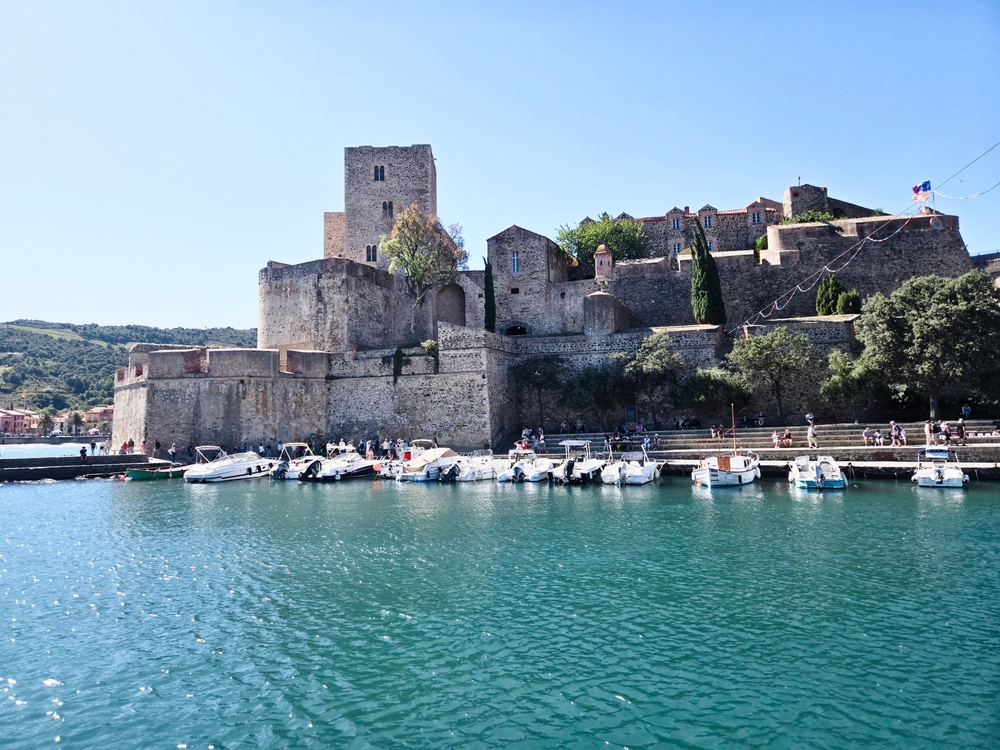
A jewel on the Mediterranean coast of the Pyrenees, Collioure enchants visitors with its idyllic setting between sea and mountains. This former royal city, which was a strategic port for the kingdom of France, has managed to preserve its exceptional architectural heritage. The royal castle, built in the 13th century and remodelled by Vauban, bears witness to the town’s military importance. The church of Notre-Dame-des-Anges, with its unique Mediterranean bell tower, is Collioure’s landmark. The cobbled streets of the historic centre, lined with colourful houses with blue shutters, have inspired many artists: Matisse, Derain and Dufy have immortalised Collioure’s distinctive light. The pebble beaches, sheltered by rocky coves, offer an intimate setting for swimming. The local gastronomy, including Collioure anchovies and Banyuls wines, will delight the most discerning palates.
18. Bagnères-de-Luchon, queen of the Pyrenees
Nicknamed the “Queen of the Pyrenees”, Bagnères-de-Luchon has embodied spa elegance since Roman times. Nestling in a verdant valley at the foot of the highest Pyrenean peaks, this spa has retained all its Belle Époque refinement. The recently renovated thermal baths offer traditional treatments and modern wellness areas fed by 80 natural springs. The 19th-century spa architecture, with its majestic spa building and galleries, bears witness to the golden age of spa treatments. The Allées d’Étigny, the main thoroughfare lined with century-old plane trees, is home to elegant shops and traditional cafés. Luchon is an excellent base for exploring the high mountains: Superbagnères in winter for skiing, the Lys valley and Port de Vénasque in summer for exceptional hikes to Spain. Lac d’Oô and the surrounding waterfalls offer refreshing excursions in the immediate vicinity.
19. Pyrenean ski resorts
The Pyrenees are one of the most beautiful ski areas in France, offering an authentic alternative to the Alps. The Grand Tourmalet, formed by the Barèges-La Mongie link, is the largest ski area in the Pyrenees, with 100 kilometres of pistes and privileged access to the Pic du Midi. Cauterets has an attractive, unspoilt setting in the National Park, with a variety of family-friendly slopes. Gourette, in the Ossau valley, offers excellent snow conditions and exceptional views of the peaks of the Béarn region. Font-Romeu-Pyrénées 2000 enjoys unique sunshine and guaranteed snow at altitude. Les Angles, in the Cerdagne, offers a family-friendly ski area with views of the Canigou. Saint-Lary-Soulan boasts an authentic village and technical slopes. These resorts, which are less popular than their Alpine counterparts, offer skiing pleasure in a typically friendly Pyrenean atmosphere.
20. Authentic villages in the Pyrenees
The Pyrenees are home to many picturesque villages that have preserved their authenticity and age-old traditions. Espelette, in the Basque Country, famous for its dried chillies on white half-timbered facades, offers a concentrate of Basque culture. Sare, named one of France’s “Most Beautiful Villages”, boasts traditional Labourdine architecture and surrounding mountain peaks. Saint-Lizier, a medieval episcopal town in the Ariège, impresses with its Romanesque cathedral and ramparts. Villefranche-de-Conflent, a town fortified by Vauban, guards the entrance to the Têt valley with its pink ramparts. These villages perpetuate traditional know-how: farmhouse cheeses, local crafts, local festivals. Their weekly markets offer the chance to discover local Pyrenean produce in a friendly atmosphere. Each village tells its own story and offers unique views of the surrounding mountains, inviting you to take a stroll and discover the local traditions that have been preserved.
In conclusion, a visit to the Pyrenees is a journey to the heart of unspoilt nature, where wide open spaces, historical heritage and living traditions blend harmoniously. This exceptional mountain range reveals its treasures to those who take the time to explore it, from mythical peaks to authentic villages, spas and unmissable cultural sites. Each valley, each lake, each village tells its own story, contributing to the incomparable richness of this region. To discover the gateway towns of the Pyrenees, like Pau in all its splendour, let yourself be guided by carefully designed itineraries that reveal all their secrets. The Pyrenees await you for unforgettable adventures between sky and mountains.
FAQ – Visiting the Pyrenees
When is the best time to visit the Pyrenees?
The best time of year depends on what you want to do: June to September for hiking and exploring the mountain lakes, December to March for winter sports, and May-October for visiting cultural sites and villages. Spring offers lush green landscapes and spectacular waterfalls.
Getting around the Pyrenees
The most practical way to explore the Pyrenees is by car. Trains serve the main towns (Pau, Tarbes, Lourdes) and the Train jaune offers a unique experience in the Pyrénées-Orientales. Some valleys have seasonal shuttle services.
Do you need to be an experienced hiker to enjoy the Pyrenees?
Absolutely not! The Pyrenees offer activities for all levels: easy walks around lakes, discovery trails, cable cars to access panoramic views, as well as technical hikes for the more experienced. Many of the sites are accessible by car.
What equipment do you need for a visit to the Pyrenees?
Make sure you bring clothing that is adapted to temperature variations (multiple layers), good walking shoes, sun protection and plenty of water. At altitude, the weather can change rapidly, even in summer.
200 audioguided tours for cities all around the world
Download